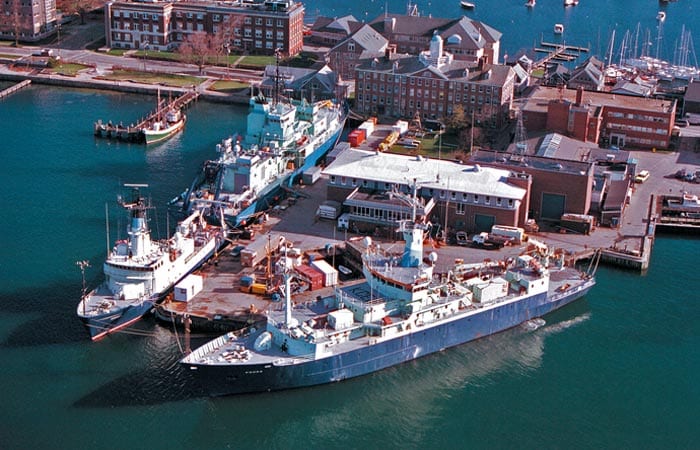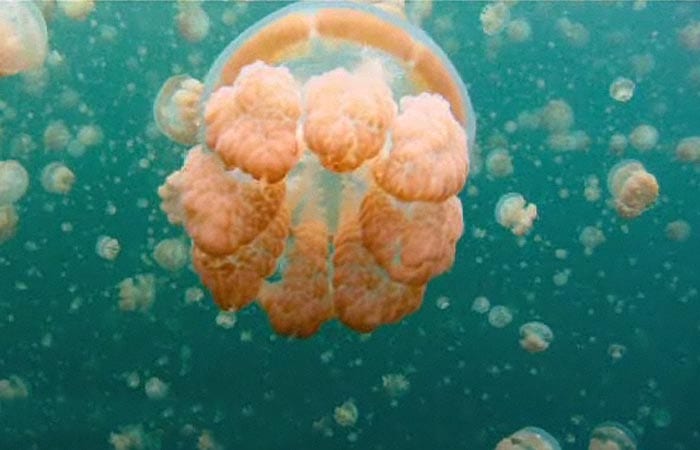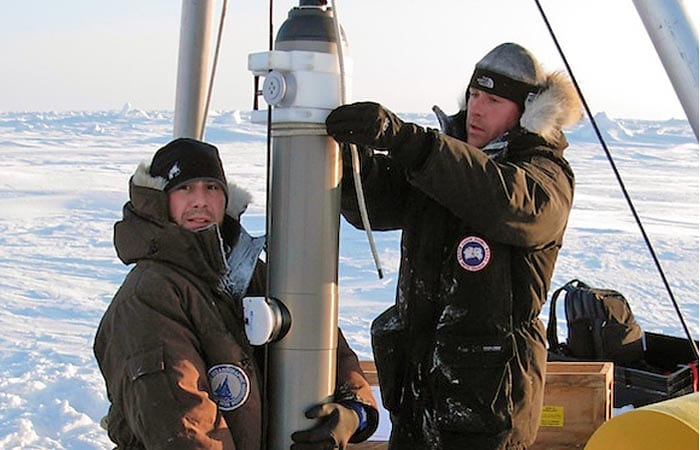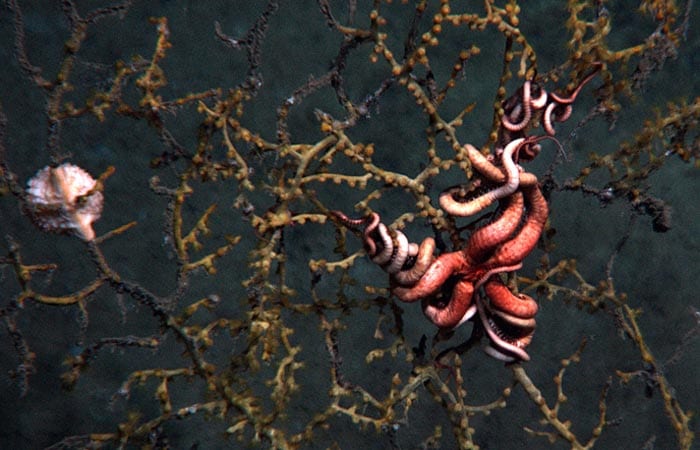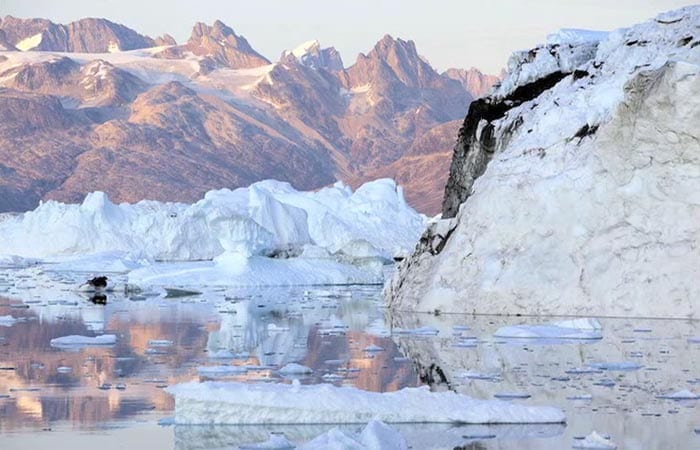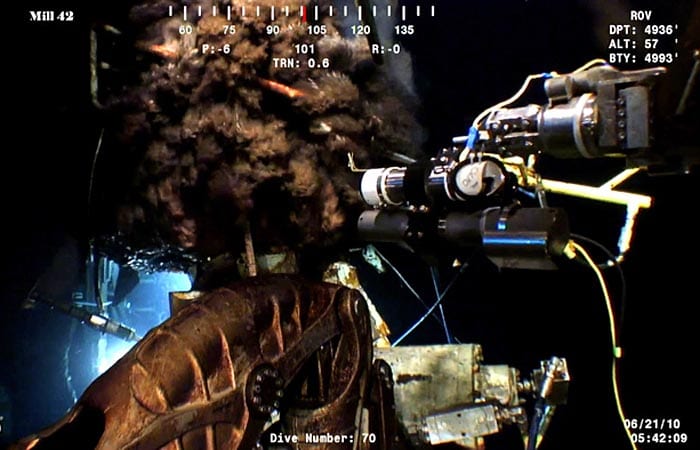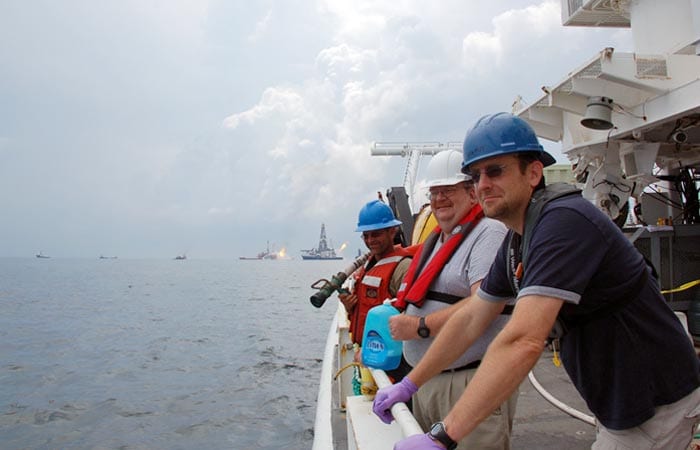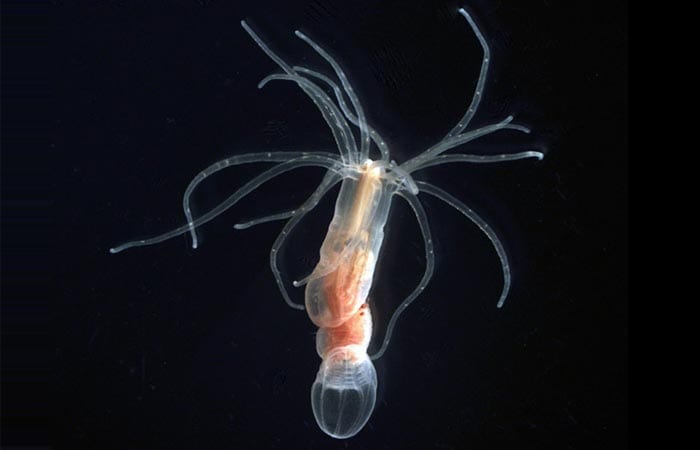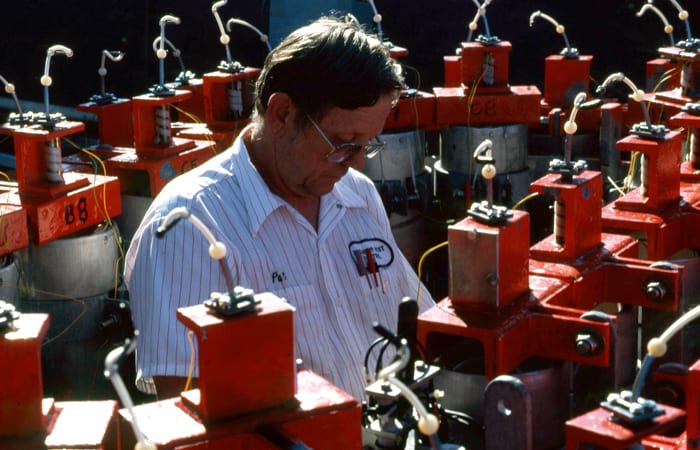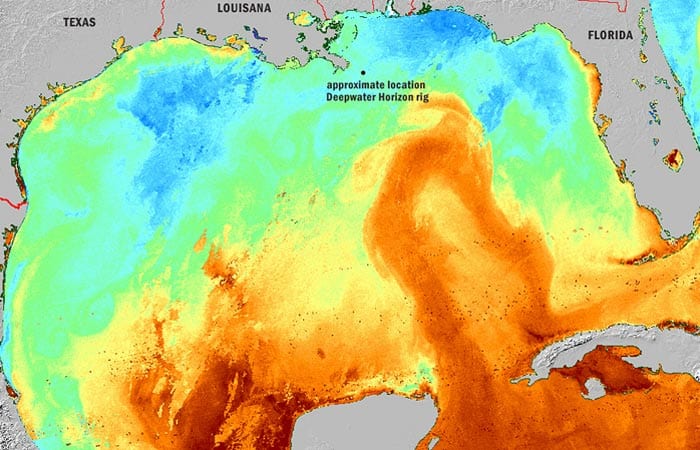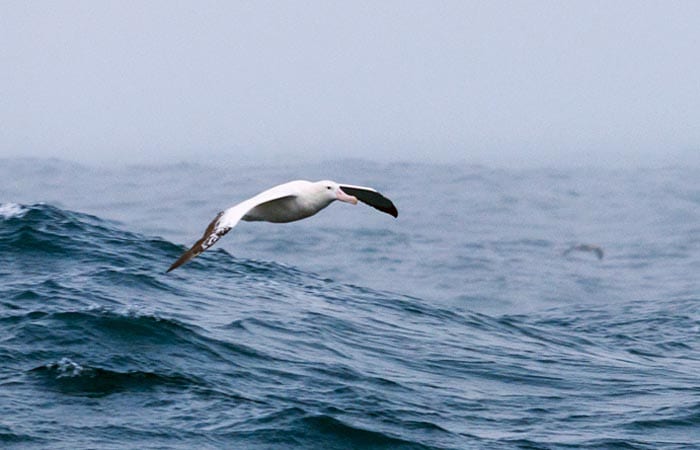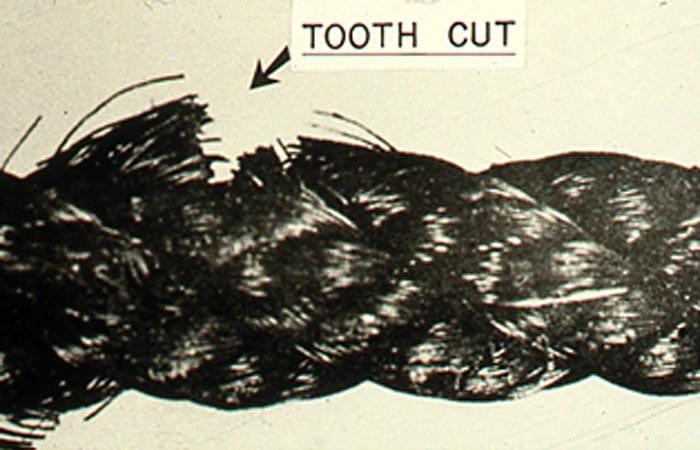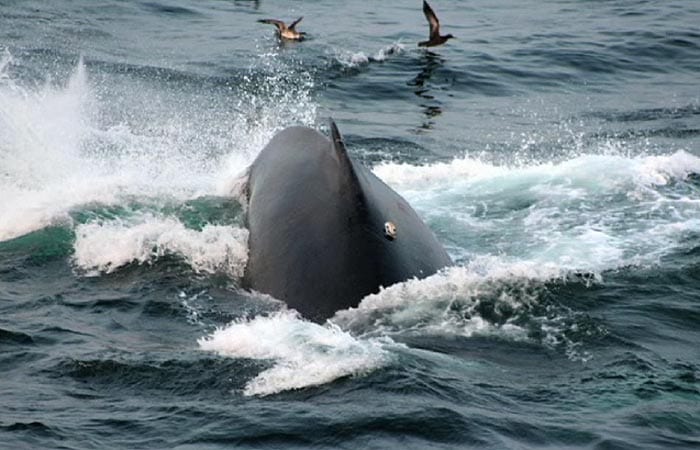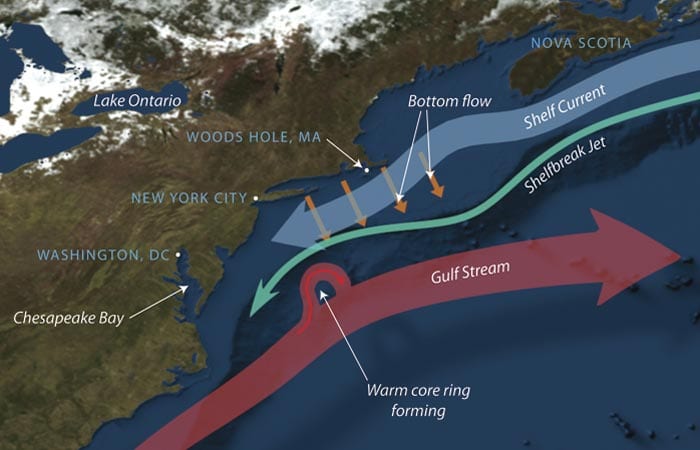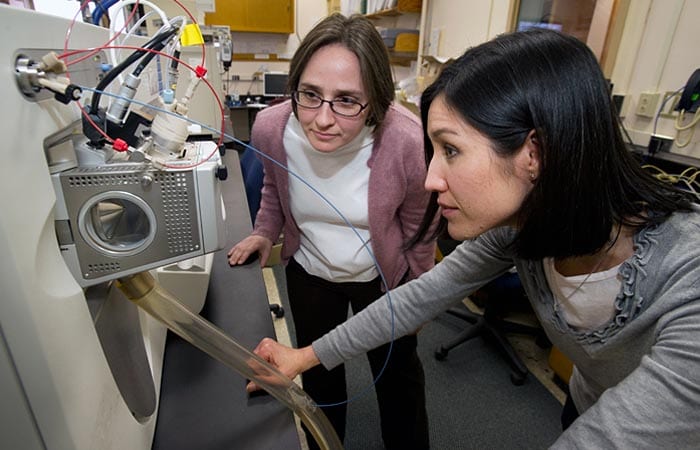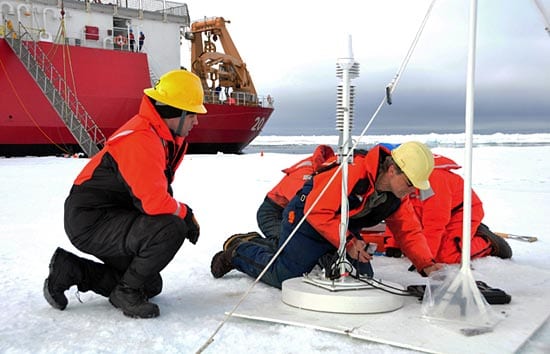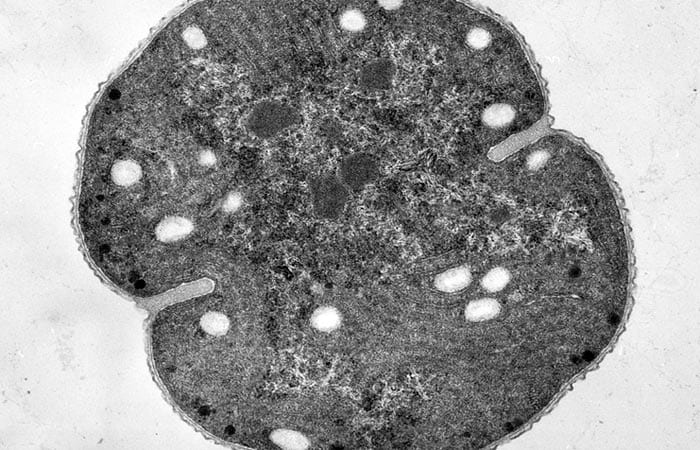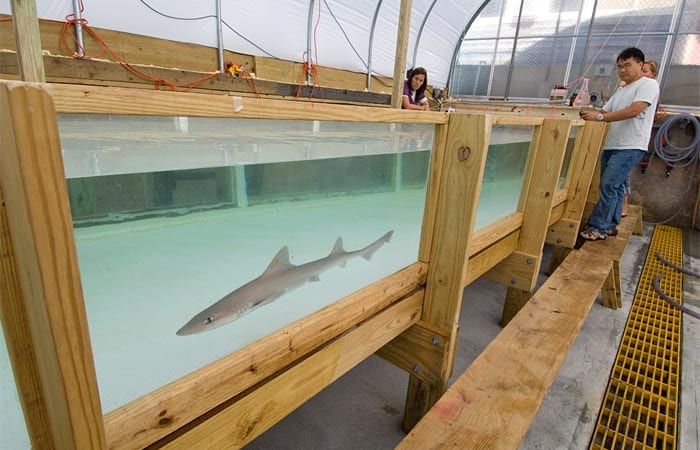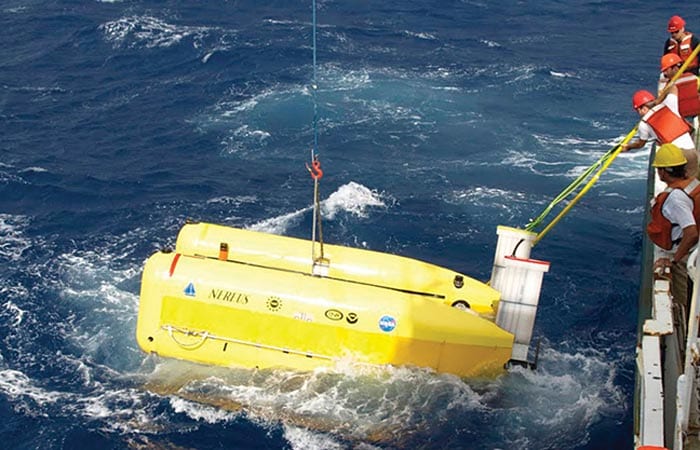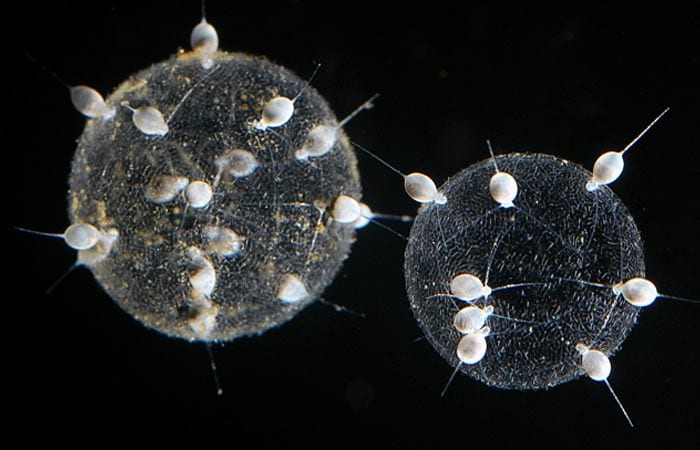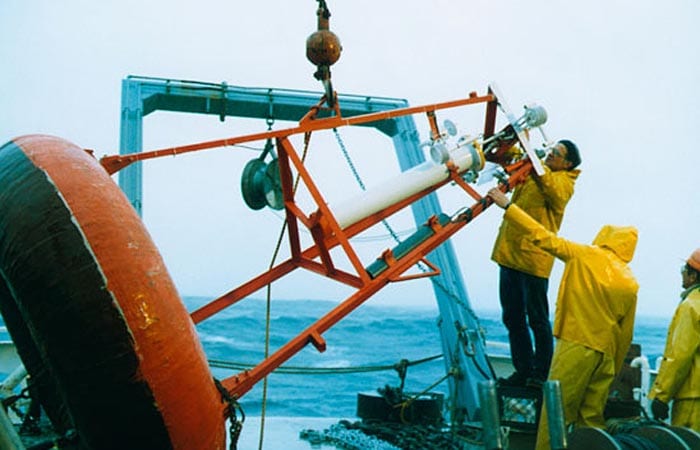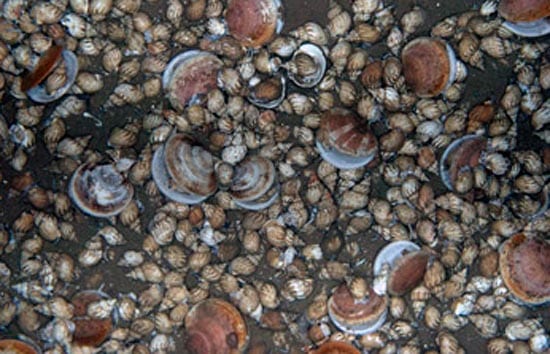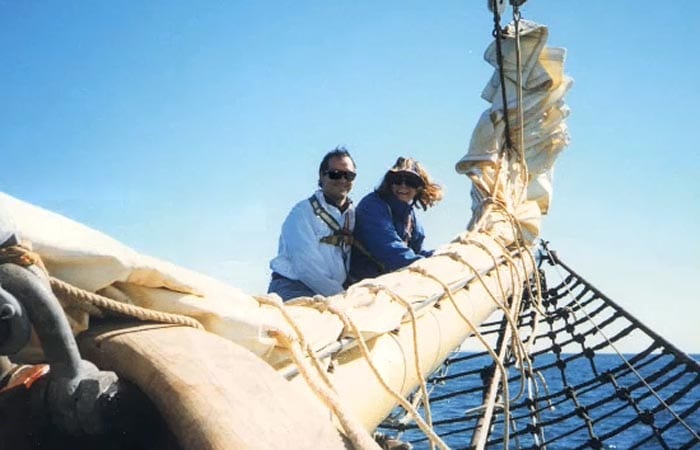Feature
A Long Voyage to Get a New Ship
On a cold, blustery day in April 1997, hundreds of people swarmed Iselin Dock at Woods Hole Oceanographic Institution (WHOI) to welcome Atlantis into the nation’s oceanographic research fleet. Politicians…
Read MoreAll the Pretty Jellyfish
<!– –> Pat Lohmann recently traveled to the tiny Western Pacific island nation of Palau to locate coral reefs with Anne Cohen, a scientist at Woods Hole Oceanographic Institution (WHOI).…
Read MoreAnother Piece in the Arctic Puzzle
It’s spring again, and while most of us are putting away our winter coats and watching our flowers pop up, it’s time for Rick Krishfield and Kris Newhall to don…
Read MoreLife and Death in the Deep Sea
It was an experiment they hoped would never happen. But when it did, they were poised to respond. In 2008, a multi-institutional team of researchers launched a long-term study to…
Read MoreWhere Ocean and Ice Meet
A Small Sip from a Big Gusher
How much oil gushed out of the Deepwater Horizon well and into the Gulf of Mexico? For all stakeholders in the oil spill, that is a critical starting point for…
Read MoreOil, Microbes, and the Risk of Dead Zones
In the scramble to get to the Gulf of Mexico to study the Deepwater Horizon oil spill, Ben Van Mooy found out firsthand why the National Science Foundation called its…
Read MoreDoes Oil Affect Animals’ Cellular Machinery?
Ann Tarrant has a soft spot for a tiny, tentacled creature. So what if starlet anemones (Nematostella vectensis) are spineless invertebrates that burrow in mud in stagnant brackish tidal marshes?…
Read MoreEngineer Par Excellence: Donald Koelsch
Dave Ross should have been sleeping. He was on a research ship in 1975, at sea near the mouth of the Nile. It was 3 a.m., but instead of lying…
Read MoreGliders Tracked Potential for Oil to Reach the East Coast
In the initial days of the Deepwater Horizon disaster, a spotlight shone on a little-known watery cog in the ocean’s circulatory machinery: the Loop Current in the Gulf of Mexico.…
Read MoreOf Wings, Waves, and Winds
“Great albatross! The meanest birds Spring up and flit away, While thou must toil to gain a flight, And spread those pinions grey; But when they once are fairly poised,…
Read MoreWhen ‘The Fish Are Biting’ Is Bad News
<!– –> Among the odds and ends in Rick Trask’s office is the tip of a swordfish bill, mounted on a piece of wood and displayed on the windowsill. For…
Read MoreThe Music of Sound
Where the Food Is in the Sea, and Why
When you’re on a boat 50 miles south of Cape Cod on a calm day, the water around you may look flat and relatively featureless. A few hundred feet below,…
Read MoreAfter the Oil Spill, Finding a Drop in the Ocean
In the aftermath of the Deepwater Horizon disaster in April, marine chemist Elizabeth Kujawinski recognized that a technique she had developed for entirely different reasons could readily be adapted to…
Read MoreExploring the Arctic in the Midst of Change
Chief Scientist Bob Pickart and his 26-member science team were in the hangar at the Barrow Air Search and Rescue Station, waiting for the helicopter. An Inupiat community barnacled to…
Read MoreStanley Watson
Biologist, businessman, benefactor (Courtesy of WHOI Archives) Institutional buildings are usually named after a person for one of two reasons: The namesake has achieved great things on behalf of the…
Read MoreRecycling Rare, Essential Nutrients in the Sea
In the vast ocean where an essential nutrient—iron—is scarce, a marine bacterium that launches the ocean food web survives by using a remarkable biochemical trick: It recycles iron. By day,…
Read MoreFor Sharks, the Nose Knows
A Hunt for Unusual Seafloor Animals and Vents
The first expedition to search for deep-sea hydrothermal vents along the Mid-Cayman Rise deep in the Caribbean Sea turned up a bonanza. Scientists found evidence for three active vent sites,…
Read MoreWhat’s Living in the Ocean?
In 2010, as the United States conducted its latest decadal population census, marine scientists completed their first census to discover the abundance, diversity, and distribution of organisms living in Earth’s…
Read MoreBuilding Them Tough, Bringing Them Back
Fifty years ago, on Dec. 11, 1960, a group of scientists, engineers, and technicians from Woods Hole Oceanographic Institution set a doughnut-shaped buoy into the waters off Bermuda. Anchored by…
Read MoreNew Ways to Analyze Ocean Imagery
<!– –> Moore Foundation grant sparks ocean informatics initiative Over the past decade, ocean scientists have built underwater systems that have greatly expanded their capacity to collect images from under…
Read More
